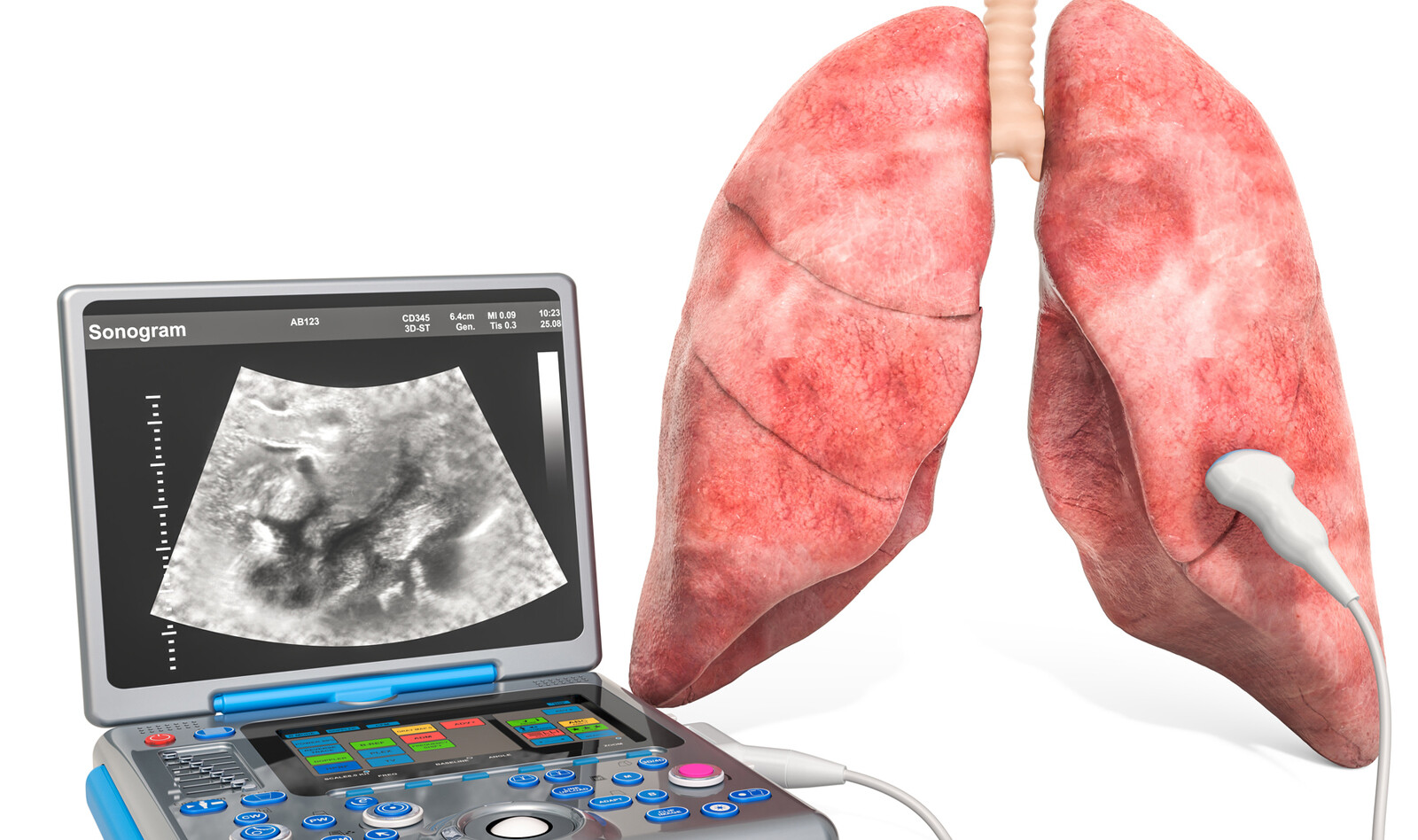ORIGINAL RESEARCH • Pneumothorax Diagnosis with Lung Sliding Quantification by Speckle Tracking: A Prospective Multicentric Observational Study
Source: American Journal of Emergency Medicine 2021 May 11, 49: 14-17
INTRODUCTION
Lung ultrasound is commonly used for the diagnosis of pneumothorax, when the absence of pleural sliding, B-lines and lung pulse, or by the presence of a lung point, has been recommended by international recommendations to make the ultrasound diagnosis of pneumothorax. Lung ultrasound analysis is qualitative and sometimes can be difficult to interpret, especially by non-experienced physicians.
On the other hand, strain ultrasound is a technique used in cardiology to analyze ventricular function. Most commonly, global longitudinal strain is used to evaluate ventricular function and was found to be more reproducible than visual analysis.
Strain consists of the analysis of spatiotemporal tissue deformations by tracking acoustic markers (speckle tracking). A recently published case report and retrospective study suggested that the maximum longitudinal pleural strain (MLPS) makes it possible to detect and quantify pleural sliding by applying global longitudinal strain to the pleural line.
Therefore, the primary objective of this study was to compare the test performance characteristic of visual evaluation or speckle tracking (MLPS) for a novice sonographer to diagnose pneumothorax. The secondary objective was to compare the diagnostic relevance of US with visual evaluation or MLPS to diagnose pneumothorax with an intermediately experienced and an expert physician.
MATERIALS AND METHODS
Study design
This was a multicentric, prospective observational pilot study conducted in two emergency departments and two intensive care units in three university hospitals. adult patients were included if they met the following criteria: (a) had suspected pneumothorax, (b) needed a chest computed tomography (CT) scan, and (c) could have a lung US two hours before or after the chest CT scan. Patients were not included if there was an indication for drainage between the US and the CT scan. Patients were excluded if the lung US was not made with a linear probe or if the cine loop recorded was not usable for speckle tracking: cine loop <3 s; ECG not connected.
Interventions
Lung US was performed within two hours before or after the chest CT scan. The US was performed with a conventional US device and a vascular (9 L-RS) superficial 3.5–10.0 MHz probe. The US was performed by emergency physicians or intensivists who were university trained in lung US and used this in routine practice in emergency medicine or critical care.
Cine loops were recorded with an electrocardiographic trace of at least three seconds. The recording was done on a lung area where the diagnosis (pneumothorax or no pneumothorax) was confirmed before or after by a CT scan.
Three physicians judged these cine loops: a physician with no experience in the practice of lung US (“novice”) undergoing 30 min of theoretical training; a board-certified physician (“intermediate”) practicing US weekly; and a board-certified US teacher-researcher physician (“expert”). Each cine loop was analyzed twice: once with visual analysis followed by speckle tracking analysis.
Aims and outcomes
The primary aim of this study was to estimate the diagnostic performance (sensitivity, specificity, positive predictive value [PPV], negative predictive value [NPV], and area under the curve (AUC) of the receiver operating characteristic [ROC] curve) of a lung US novice sonographer using visual analysis or MLPS for the diagnosis of pneumothorax to compare it.
RESULTS
122 patients were recruited, mean age 53 +/− 21 years, 25 (25%) were women, 50 (51%) had a pneumothorax on CT. MLPS was feasible in 92 (92%) of the scans analyzed by the novice sonographer, in 97 (98%) by the intermediate sonographer, and 97 (98%) by the expert sonographer.
Primary outcome
For the novice sonographer, the AUC was 0.75 (95% CI [0.67; 0.83]) and 0.86 (95% CI [0.79; 0.94]) with visual analysis and MLPS, respectively (p = 0.04).
Secondary outcomes
For the intermediate sonographer, the AUC was 0.93 (95% CI [0.88; 0.99]) vs 1.00 95% CI [1.00; 1.00]) with visual analysis and MLPS, respectively (p < 0.01).
The AUC for the expert sonographer was 0.98 (95% CI [0.95; 1]) vs 0.97 (95% CI [0.93; 1.00]) with visual assessment and MLPS, respectively (p = 0.69).
The agreement between the expert sonographer and the novice sonographer using visual analysis was 0.22 (fair agreement); between the expert sonographer and the intermediate sonographer it was 0.75 (substantial agreement). The agreement between the expert sonographer and the novice sonographer using MLPS was 0.48 (moderate agreement); it was 0.82 (almost perfect agreement) between the expert sonographer and the intermediate sonographer.
CONCLUSION
The authors concluded that the performance of a single novice physician in diagnosing pneumothorax with US was improved using speckle tracking, as compared with visual evaluation. Speckle tracking also increased the performance of an intermediately experienced physician but not the performance of an expert sonographer.
 English
English
 Español
Español 

